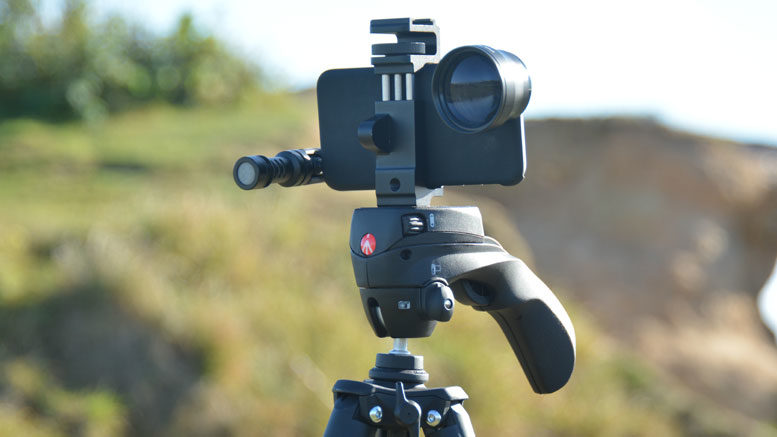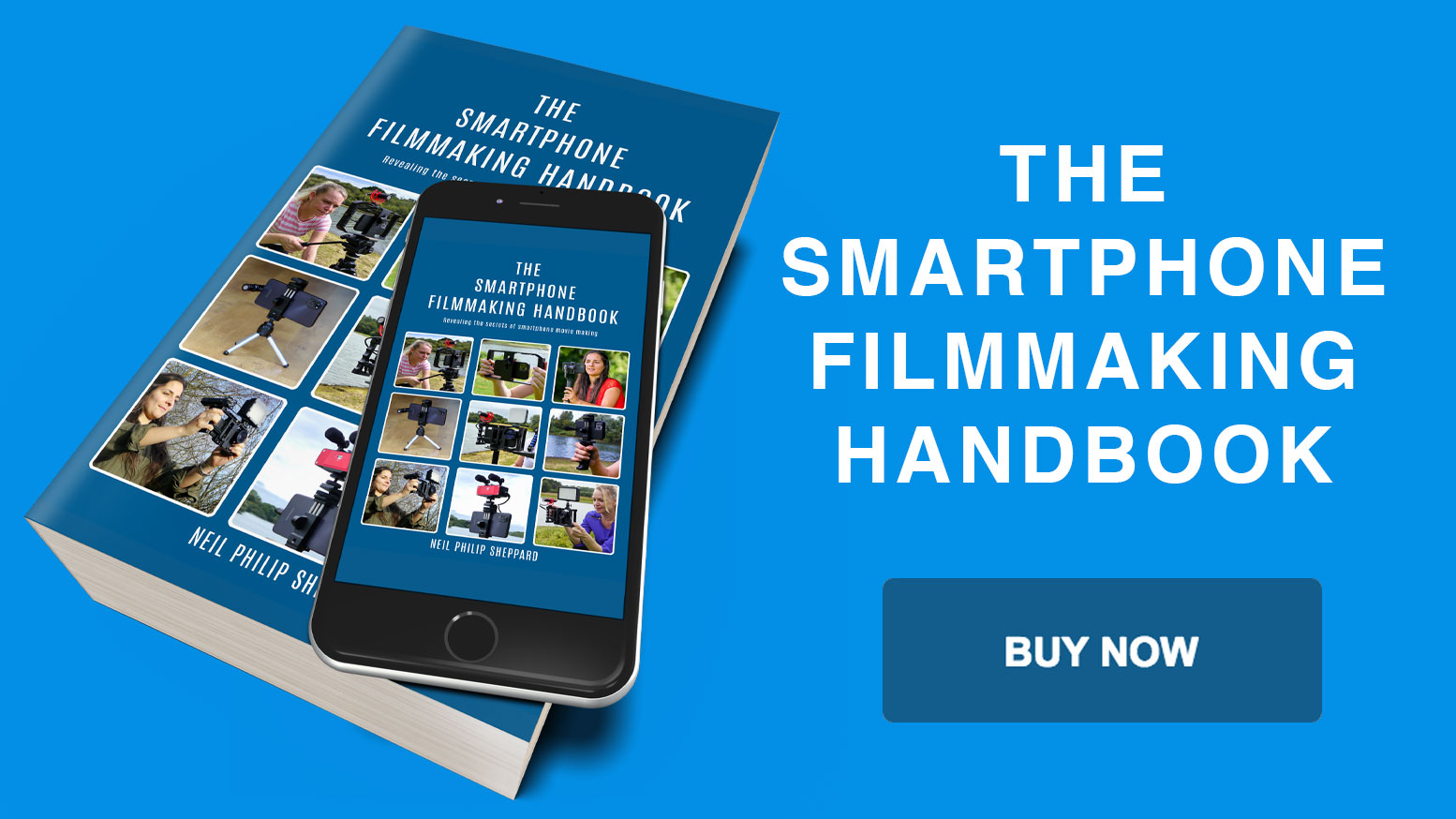What is the best way to use a Tripod?
If you want to give your videos a professional look, a tripod is an essential buy. Video that is stable and well framed always looks better than a chaotic roaming hand-held shot. If you watch any BBC documentary you will see that nearly every shot filmed is static or with a slow tilt or pan. They do this so you as a viewer don’t get motion sickness trying to watch a wobbly camera. This is not to say that hand-held shots don’t have their uses, but in general your videos will look better if you mount your camera on a tripod or portable monopod.
This content uses referral links. Read my ethics policy for more info.
This article first appeared at Digital Film Pro
How to use a tripod to make a great video
When you open your tripod’s legs, make sure that they are standing in a firm and stable position. Attached to the tripod legs you will find tension levers that you can use to adjust the legs so you get the tripod to the correct height. Once you do this you may need to fine-tune the height of the legs to get the tripod level. Some tripods have bubble levels to help you do this.
There are two ways to position your tripod legs: One is to position one leg forward and the other is to position two legs forward. If you are on even level ground the common position is to have one tripod leg forward. This allows you to stand behind the front leg between the tripod’s other two legs with little difficulty.
If however you are filming on a downward slope you may need greater stability. In this case you should point two legs forward. This will give you greater frontal support and avoid the tripod falling over.
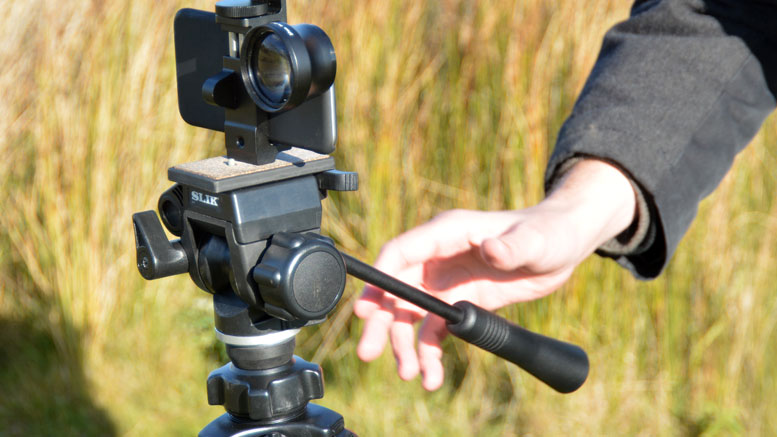
On the top of your tripod will be a plate or screw. You can remove this plate by opening the rear clip or lever. When you do this, the plate should come off the tripod. Once you remove this plate, attach it to your Smartphone and then reattach it on your tripod.
Your tripod comes with a tripod head. This is what your tripod plate attaches to. There are several different types of tripod heads and each has different uses. Ball heads and pan and tilt heads are two of the most common tripod heads. You can adjust the position of your Smartphone with a ball head but once you do this you must lock it in place. This does not make them good for filmmaking as you cannot pan and tilt with them. Pan and tilt heads are better for Smartphone camera movements. They usually have a long handle that you can use to make smooth panning and tilting movements. These are better for filmmaking.
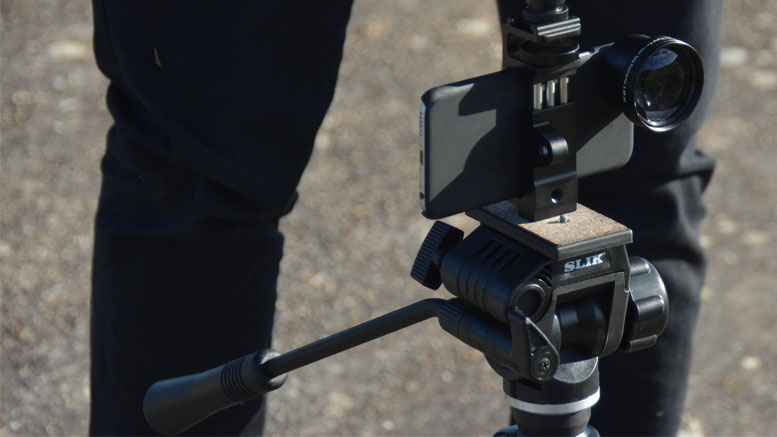
One of the most important ways of making smooth panning and tilting shots is to adjust the tension on the pan and tilt ‘drags.’ These adjust by turning thumbscrews to increase or decrease tension in the tripod head. If these screws are too loose the tripod head will flop and will not stay upright. If they are too tight you will get jerky movements when you try to pan and tilt the tripod. You will need to adjust these controls until you can pan and tilt the tripod head with smooth movements. They should also allow the head to remain in position when you are not moving it. It is wise to have the tension the same in each thumbscrew so pans and tilts are the same when you move the tripod head.
Never carry the tripod with your Smartphone attached. If the plate becomes unattached your expensive Smartphone will fall to the ground and may get damaged. Always remember to remove your camera before you move your tripod. That way your camera will remain safe. When you finish your video shoot remember to remove the plate from the Smartphone adaptor and reattach it to the tripod. The tripod should never be without the plate. With the plate missing it is as good as useless.
Panning and tilting
When you do come to film your panning shot you should break it down in to three parts: A beginning composition, an ending composition, and the smooth transition between these two compositions. You should make sure you do not commit to doing a Smartphone camera move if you don’t know where you are going to end your movement. In other words you should plan where you are going to end your Smartphone camera move.
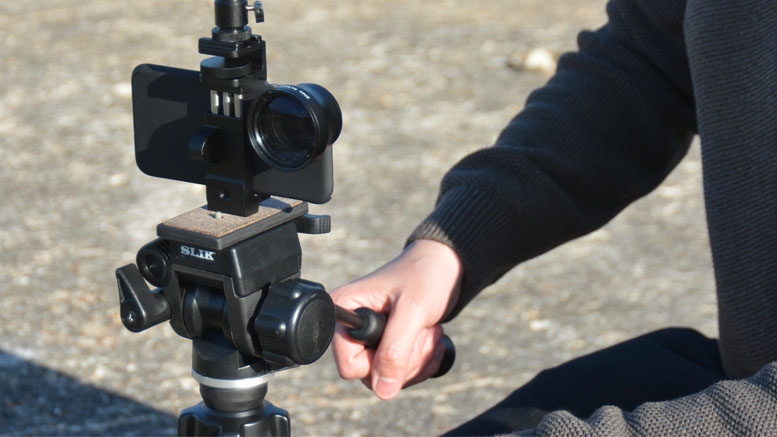
You should start with framing up your ending shot first. Once you have done this, swing the tripod head to the start position. When you do this, don’t change your feet position. You will find this may require you to twist into a slightly awkward position but as you move your camera you will find you will go from an unstable position to a stable one. It is your end-position that counts and this should be the most comfortable one.
When you do your Smartphone camera move, start slowly and speed up as you move. When you get to the end of your Smartphone camera move, decelerate and slow to a stop when you reach your end composition shot. You might want to do this a few times with different speeds to give yourself some different choices when you come to edit your final video.
Types of tripods
There are many different varieties of tripods available and the one you choose will depend on your filming needs. Full-sized tripods are sturdy but as a result can be heavy to travel with. They are great for doing studio work but may not be convenient if you are often travelling around as they can take up room in your kitbag and can be awkward to carry. They do have the advantage of giving you less Smartphone camera shake because of their extra weight.
Compact or travel tripods can be the same size as full-sized tripods but are much lighter in weight. They can achieve the same height as full-sized tripods but are often easier to travel around with. The problem with compact tripods is they are not as stable as full-sized tripods. To keep a compact tripod sturdy in rough weather, you may need to weigh down the legs.
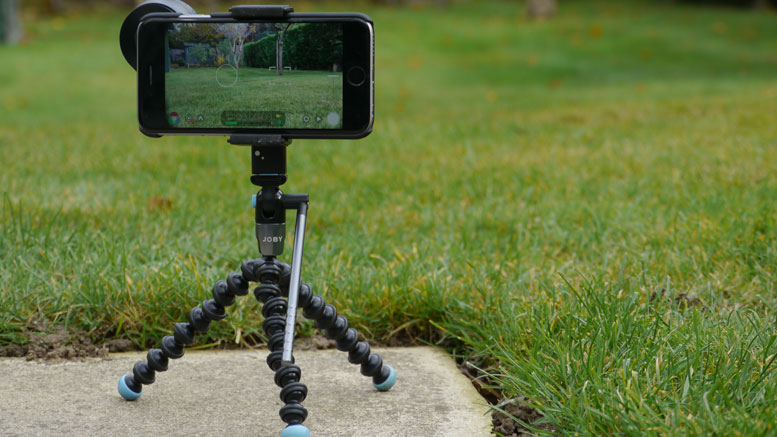
GorillaPod’s have flexible legs, which you can wrap around branches, fences, lamp posts, computer screens; in fact nearly anything you can think of. They are also lightweight like compact tripods and will often fit comfortably into your kit bag. If you bend the legs into the right position they can also use them as a hand-held stabiliser to steady your Smartphone shots when you are walking or moving about. This gives you two tools for the price of one.
Table-top tripods are small and compact tripods you can use for standing on desks when you want to film yourself with your Smartphone. They are great to keep in your camera bag and come in handy when there is little space to set up a full tripod or you need a secure mount for your Smartphone in a hurry.
Top tripod features
Before you choose your tripod you should decide what features you need from it. You should consider the head, the legs, the feet, the height, the weight and the price. You should examine all of these areas before you decide on what you want to buy. Also, consider the main work you want to do with your tripod. If you are travelling around, a compact tripod may be ideal for you, alternatively, if you are working in a studio, a heavy tripod maybe more useful.
Head
The tripod head is one of the most important parts of a tripod. It allows you to pan, tilt and move your Smartphone smoothly for moving shots. It also has variable resistance to these moves by adjusting the tension of the thumbscrews found on the head. To get the smoothest moves for video you should make sure your tripod has a fluid head.
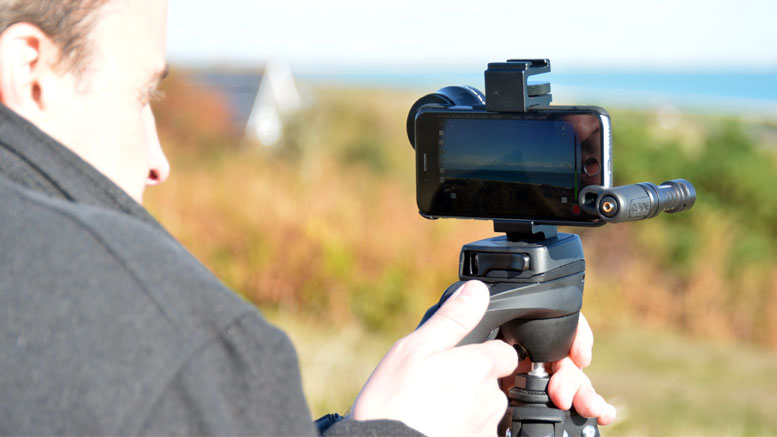
You can spend a small fortune on a fluid head for a tripod with some of the expensive ones costing hundreds of dollars. If you can, go to a camera supply showroom, and try out some tripod heads by moving them around. Check that they move smoothly. You don’t want a tripod head that jitters when you try to do a pan or tilt, this can be common in some cheap tripods.
Legs
When you look at a tripod’s legs you should make sure they are strong enough for your chosen filming conditions. Smartphones are light so the legs won’t be carrying a huge weight but you should check the tripod’s documentation to find out what the maximum weight is that it can support. Once you add on microphones, lights and other accessories it can all add to the total weight.
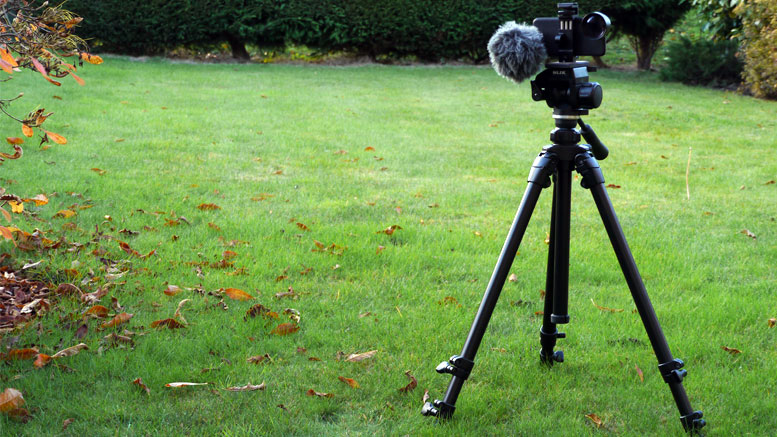
Some tripods have carbon fibre legs and these have the added advantage of being strong without the weight. They are often more expensive though. Also, make sure the latches work properly in keeping the legs at the right height. Insecure or weak latches may not hold secure or in the worst case even break. Legs should also extend and collapse easily. If they buckle it can make it difficult to pack the tripod away.
Feet
Make sure the feet of your tripod grip the ground securely without slipping. Cheaper tripods sometimes have hard rubber or plastic feet that may slide about on some surfaces. They can also break easily leaving your tripod useless.
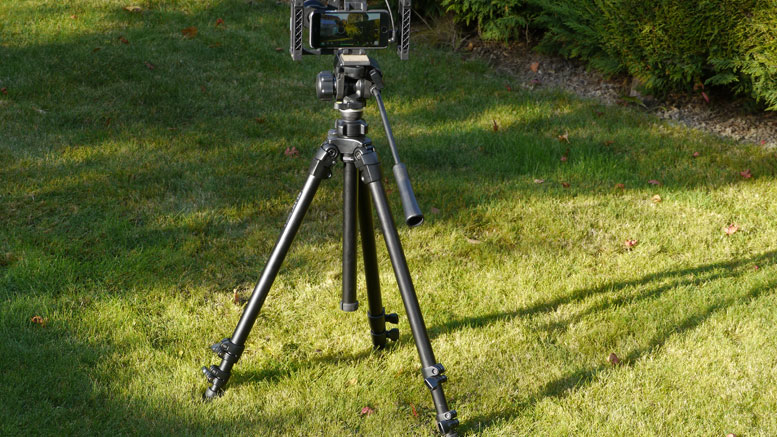
Try to look for feet that are rubber with metal pins or spikes. These rubber feet should be retractable and adjust to reveal the spikes so you can get better grip when you are filming on grass or rough ground.
Height
It is important to check how high your choice of tripod goes. It must get to a height so you can film with it while standing up straight. The tripod mounting plate should reach your chin when you extend the legs fully. For a person that is six feet tall the tripod would have to reach a height of 60 inches before you attach your camera. You can extend the middle pole to get more height but you should not count this as the maximum height of the tripod as this middle pole hinders the stability of the tripod. So make sure the maximum height calculates from the legs only.
Weight
You don’t want your tripod to be too heavy. Carrying around a heavy tripod when you are running to different locations becomes tiresome and after a short while you will find yourself not using it at all. Heavy tripods do have the advantage of being better in the wind and you will get less camera shake, but in most situations you will find this unnecessary.
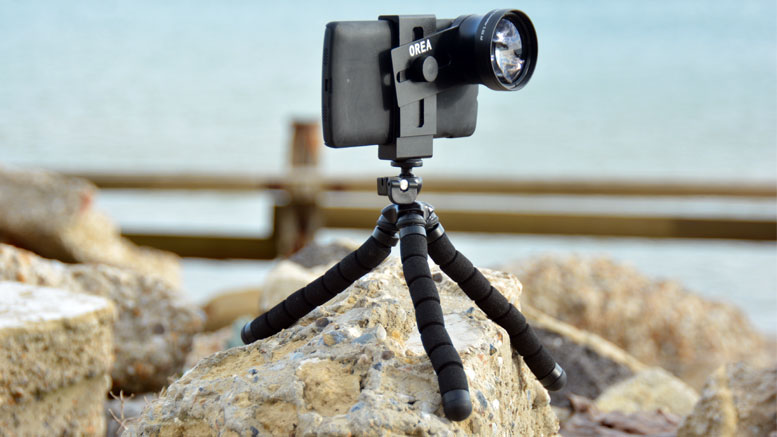
All of these factors may seem overwhelming when it comes to choosing your tripod but don’t let them worry you too much. The most important decision to get right is the fluid head of the tripod. If this is not any good, you will find it impossible to get smooth panning and tilting shots. So prioritise the tripod head when buying your tripod.
Other Popular posts like this:
What are the 8 best compact tripods for Smartphone filmmaking?
What are the 8 best Smartphone tripod mounts?
What are the best gimbals for Smartphone filmmaking?
What are the best Smartphone stabiliser cases?
What is the best Smartphone filmmaking kit for Social Media?

